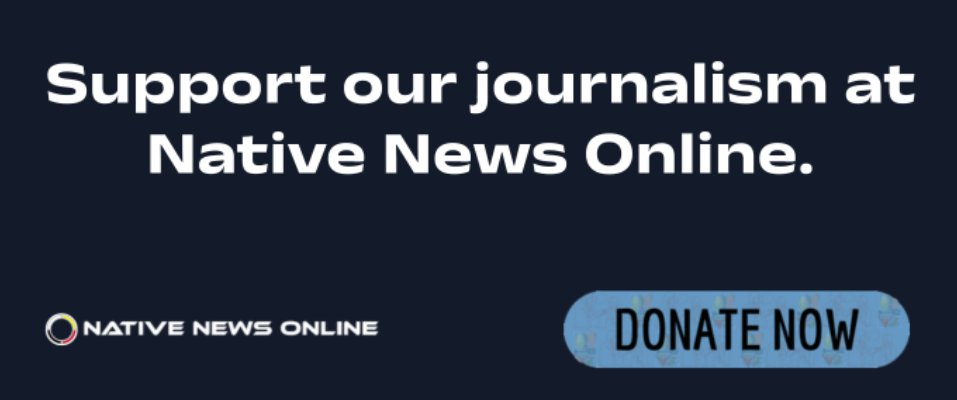
- Details
- By Elyse Wild
Native Americans face some of the highest suicide rates in the country, yet have limited access to life-saving interventions and culturally centered mental health care.
In response, the National Alliance on Mental Illness (NAMI), has launched a new initiative to bring mental health care to Indian Country.
Mechelle Negrete (Mescalero Apache), NAMI’s manager of American Indian Mental Health Community Outreach, spoke with Native News Online about suicide’s driving forces in Native communities, cultural revitalization’s role in healing, and the importance of listening to local voices when designing support systems.
Editor's Note: This article has been edited for brevity and clarity.
What’s your background, and what brought you to this work with NAMI?
I started working for NAMI in August 2024. Their Native American initiative is brand new, so I’m launching it. I’m Mescalero Apache on my mom’s side and also half Mexican. I’ve worked in nonprofits for most of my career, mainly in environmental and natural history-related roles. While that work is important, I wanted to have a more direct impact on the community, especially with everything happening right now. That led me to this work, where I hope to bridge gaps and ensure people don’t feel alone.
What historical factors have contributed to the high suicide rates we see in Native communities?
It all goes back to forced relocation and cultural suppression. Boarding schools were incredibly harmful, stripping away identity and severing community ties. This led to generations of trauma that we’re still seeing today. Research suggests generational trauma lasts about four generations, which aligns almost perfectly with the timeline from relocation in the 1850s to today. The impacts have compounded over time, leading to higher rates of isolation and mental health struggles.
How do Native communities sometimes struggle with mental health stigma?
Many Native communities are tight-knit, which can make privacy difficult. Some people fear that seeking help—such as attending a support group—will be noticed by others, leading to judgment. Mental health struggles can also be seen as a personal failing or a sign of weakness. There’s also a mentality that compares present struggles to past hardships, with people saying, “You have no idea how good you have it.” That kind of thinking dismisses individual experiences and makes it harder for people to seek help.
What role does cultural revitalization play in mental health care?
Culture is essential to healing. Being separated from traditions and identity can create an identity crisis, so reintegrating cultural practices into mental health care is vital. This can include talking circles, sweat lodges, storytelling, or even language revitalization. Studies have shown that reclaiming language can improve mental health. My academic background is in linguistics, so I’m really interested in how language ties into mental well-being.
What policy and community changes would make the biggest difference for Native mental health?
At the community level, we need more spaces where elders and community members can openly share their struggles. Elders hold so much wisdom, and when they show vulnerability, it helps normalize conversations around mental health. At the federal level, we need more funding for Indian Health Services. Ideally, every reservation school would have access to a counselor, and clinics would have dedicated mental health professionals. Recognizing tribal sovereignty is also crucial—these were not issues in our communities before colonization. If we are given the space to support our people in culturally appropriate ways, we can address these disparities effectively.
We’ve seen tragic situations where multiple suicides occur in a short time period within Native communities. What does the ideal community response look like to these suicide clusters?
Communities need to respond immediately with love and support. Bringing in counselors, cultural leaders, and elders to provide both modern and traditional healing is critical. Youth are still developing coping mechanisms, so it’s important to give them healthy outlets like art, ceremony, and sports—anything that allows them to process their grief in a non-harmful way.
You're conducting a survey as part of this new initiative. What information are you hoping to gather?
NAMI has worked with Native communities before, but this is the first time we’re launching a dedicated program specifically for Native mental health. The survey helps us understand what topics people want covered and what disparities exist in different regions. Since every community is different, I want to ensure we’re addressing each community’s unique needs. The survey is short—about seven questions—and helps shape how we support Native communities nationwide.
What gives you hope for the future of mental health support in Native communities?
I just hope this helps push things in the right direction. Native mental health is finally getting more attention in mainstream conversations, and we’re already seeing the benefits of awareness. The more we talk about it, the more we can do to support our communities.
_________________________________
Resources for Native Communities
For Native readers in communities with limited mental health services, these national resources are available:
988 Suicide & Crisis Lifeline – Free, confidential 24/7 crisis support
NAMI Helpline – Mental health support Monday-Friday, 10 a.m.-10 p.m. ET. Call 1-800-950-6264 or text "helpline" to 62640
Crisis Text Line – Text "NATIVE" or "INDIGENOUS" to 741741 to connect with a culturally competent counselor
StrongHearts Native Helpline – Specifically for Native people facing domestic and interpersonal violence. Call 1-844-762-8483
More Stories Like This
Johns Hopkins Collecting Tribal Success Stories from $1.5B Opioid SettlementArizona MMIP Task Force Holds Listening Session for Survivors and Families
‘A good stew is a story’ Blackfeet buffalo rancher shares Three Sisters Buffalo Stew recipe
National Indian Health Board Urges Congress to Extend Enhanced Premium Tax Credits
$1.25 Million Grant Gives Hope to Tolowa Dee-ni' Nation Amid Housing Crisis


